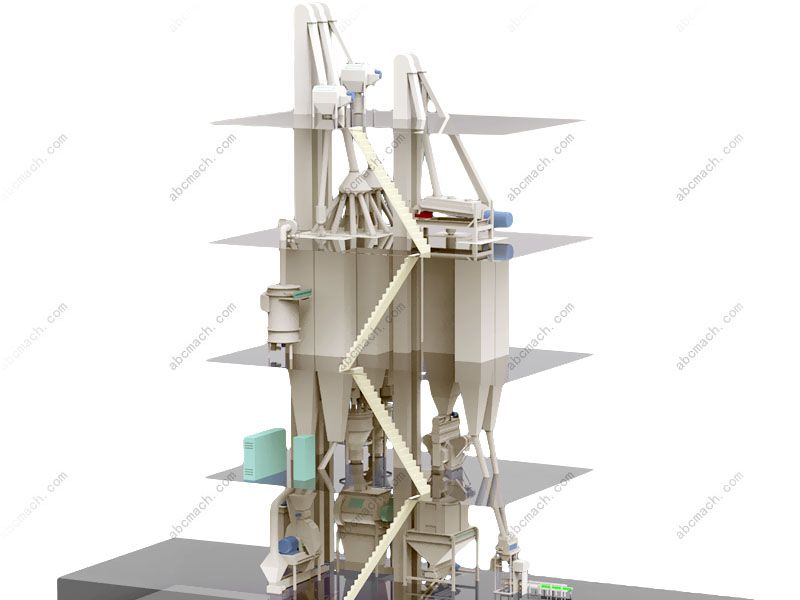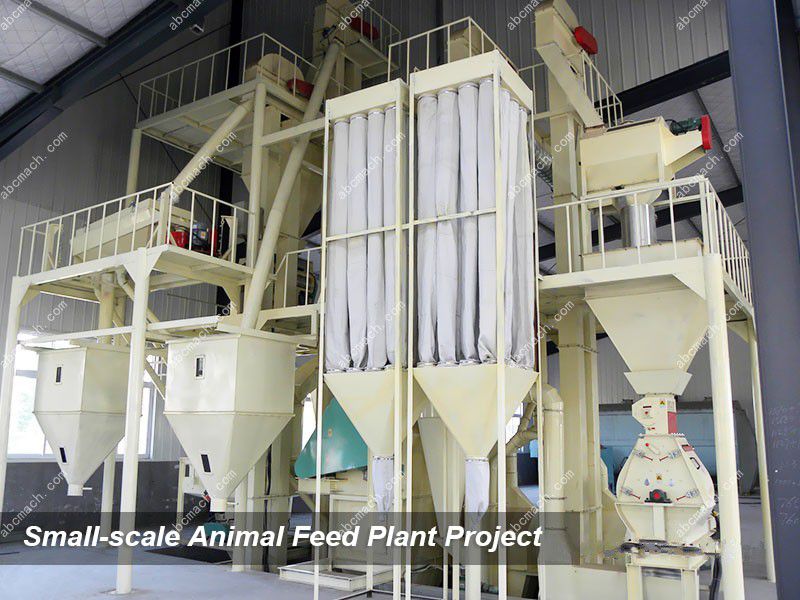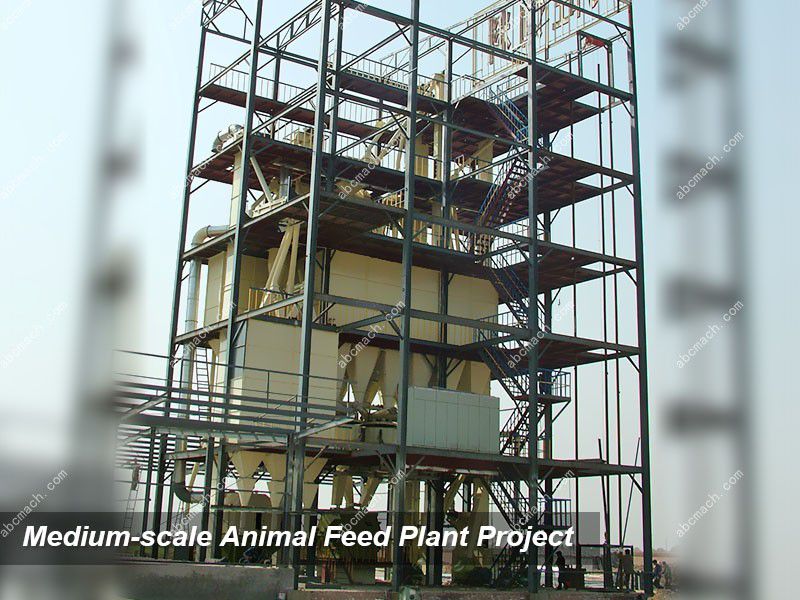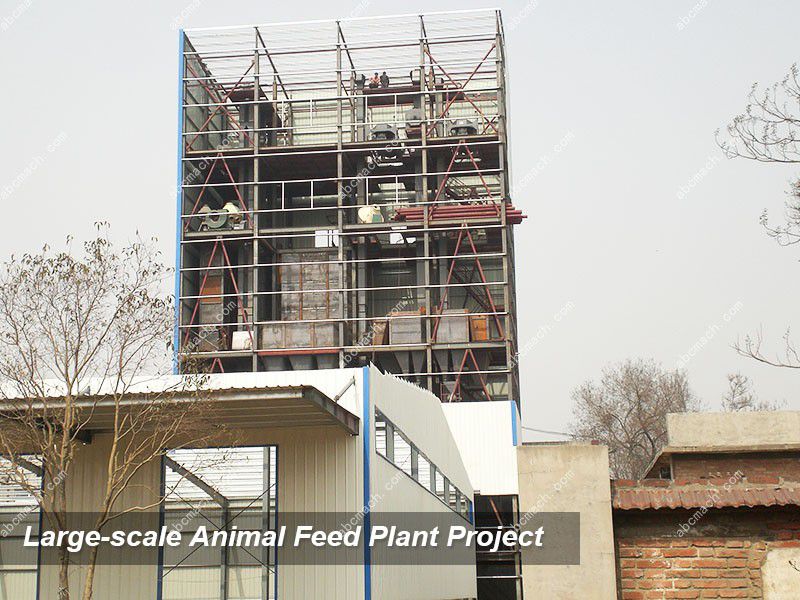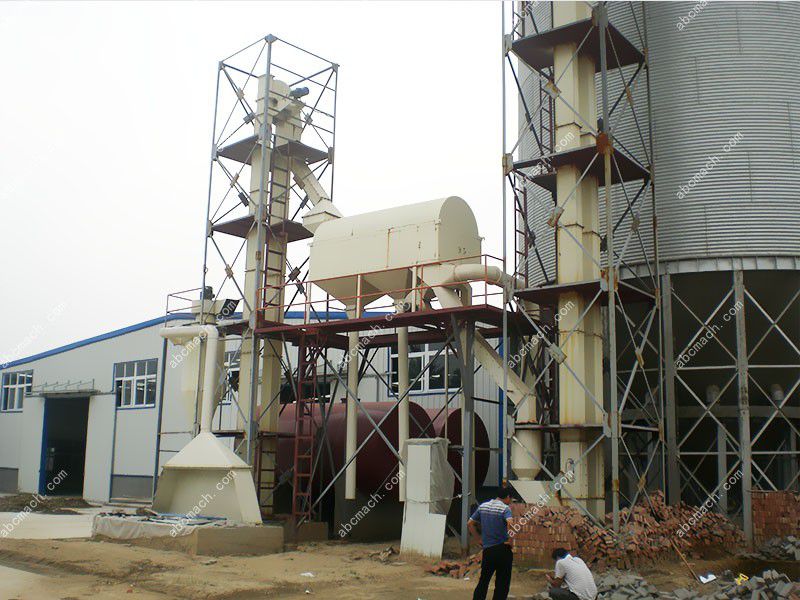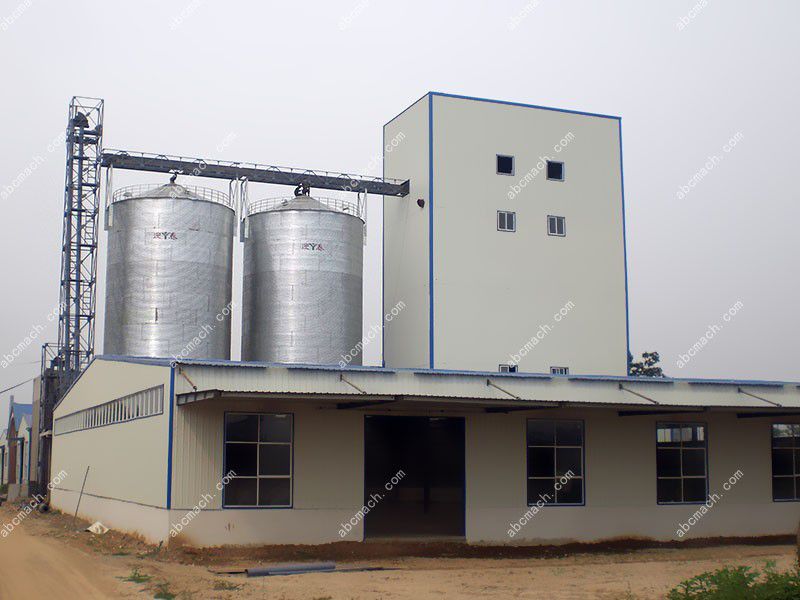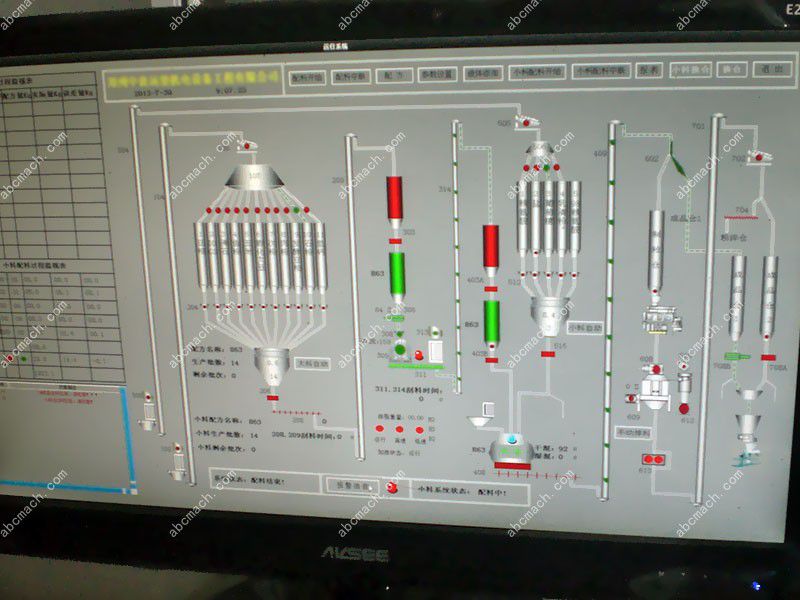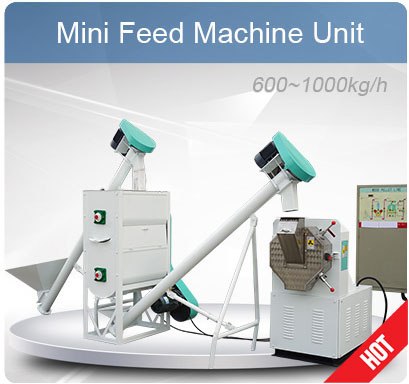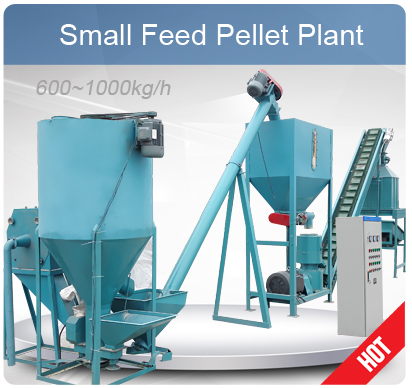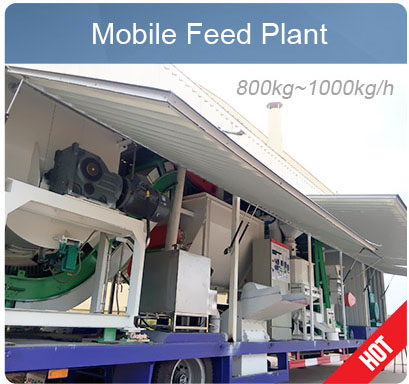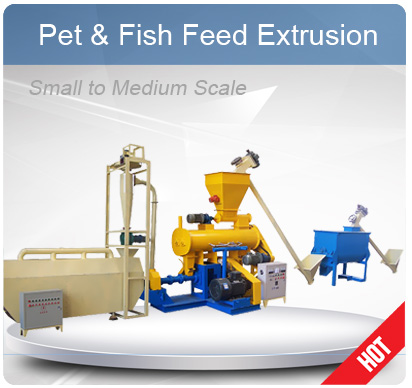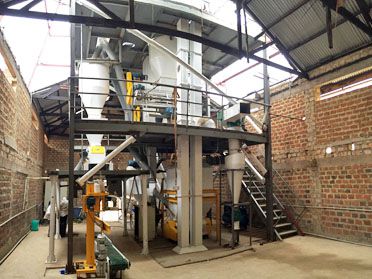Project Capacity Range: 1~1000,000 tonns / year
The Goal of Our Solution: to produce the most qualified feed pellets with minimum cost and energy consumption.
Our service and relationship with our clients are based on:
- We fulfill their hopes about delivering a wide an integral ranges of products and services.
- Our feed processing equipment go beyond a good looking or functional design and the supplying of turnkey animla feed pellet plant.
- We make sure to deliver and suitable economical use of the raw materials and energy through a well-maintained equipment that operates at a high-quality rate.
- Providing low operating costs that will allows customer to gain a competitive and crucial place in the market.

How to start a complete animal feed production business plan? How to choose the right feed milling equipment? We are a reliable manufacturer of animal feed machines who can help you! Our goal is to help our clients produce the most qualified animal feed with least energy and lowest cost.
We are a company that manufactures animal feed milling equipment and complete feed production line whose priority is to build a client's relationships based on partnership. To do that we must first assure several things.
- Our services, plants and equipment are designed upon a modular strategy that can be customized.
- We study our costumers needs too successfully deliver on our customers’ expectations.
- We make sure to fulfill their needs according to the varieties of feed requirements for livestocks and other animals, a wide range that goes from dairy cows, chickens, goats, cattles, pets like dogs and cats, to fishes and crustaceans.
- For something to have a successful and proper function it is important to meet the client's necessities for them to achieve their goal and their necessary feed and production.
Deisng of Animal Feed Production Business Plan
The process flow of the animal feed production plant is different depending on different feed products and different habits of animals. However, the cleaning section is generally in front, and the pelletizing section is always in the back. While for crushing, batching and mixing section, there are mainly two different combinations: one is batching after crushing, and the other is crushing after batching.
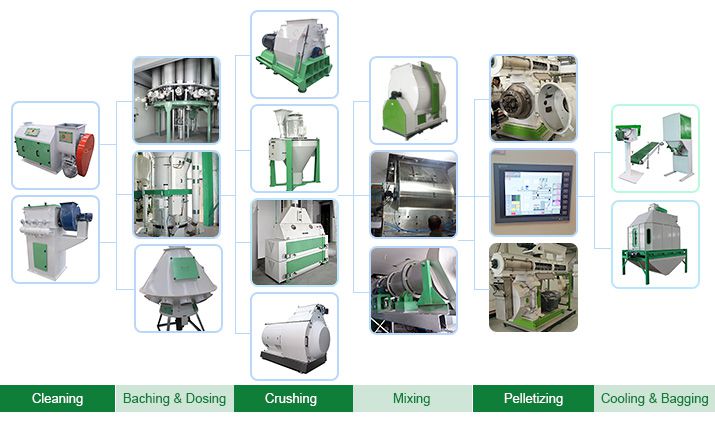
“Batching after Crushing” Process Flow
This type of process design is most used in the animal feed production line in the United States.
- The various raw materials will be crushed separately at first.
- Then enter the respective batch bin. The additives will be diluted and then enter the additive bin.
- During the batching process, the operator should send the required amount of each feed into the mixing bin of the batcher according the feed formula.
- After batching, the ingredients will be sent to the mixer to be fully stirred and mixed.
- When the mixing uniformity reaches the standard requirements, it becomes the qualified powder compound feed or formula feed. If you need to make feed pellets, the next should be pelletizing section.
“Crushing after Batching” Process Flow
- The various raw materials are sent to the batch bin directly.
- Then, the ingredients are weighed by the batching scale according to the ratio requirements of the feed formula.
- The crushing is done in batches and then mixed eventually.
In order to reduce the power consumption of crushing section, a grading screen can be added after batching. The ingredients with qualified size can be screened out and sent to the mixing machine directly without being crushing again. This type of process design is commonly used in animal feed milling plant in Europe. It is also widely used in the production line which has high requirements on feed fineness, such as fish feed plant.
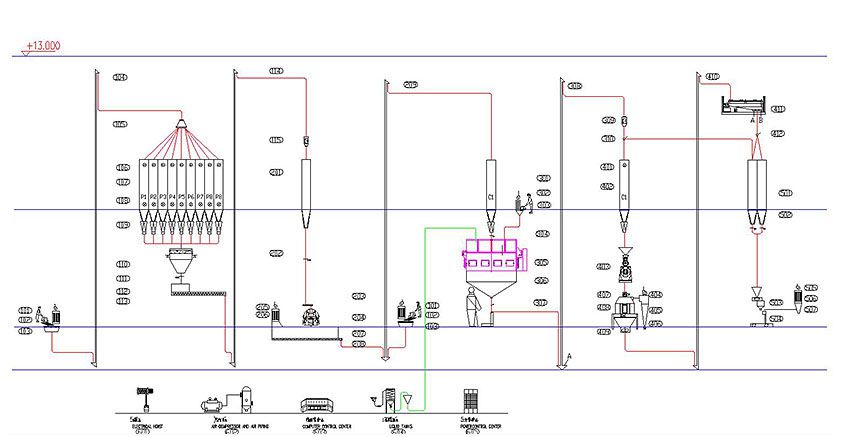
Characteristics of the Above Two Different Process Design
- Batching after Crushing
- Crushing after Batching
It needs less storage bin, which can save some workshop space and investment costs. From another point of view, since the materials are provided with coarser and particle size, the possibility of arching is largely reduced. Besides, the crushing fineness is relatively uniform.
As it is not necessary to wait until all raw materials to be crushed, the preparation time of this production kind is short. It is particularly convenient for manufacturers who produce animal feed from many varieties raw materials.
Technically, it is easier to crush various raw materials together than crush a single raw material. Especially for high fat or high moisture raw materials that are difficult to crush.
Here, we need a far more holistic approach in on the issue of preparing pellet feed. It is essential to know that before start a complete animal feed production business plan, it is quite crucial to learn about the conditioning process before pelletizing. Many recent studies have proved that conditioning greatly improves the quality of pellet feed for more than 20%. Gradually, the market has developed great demand for high quality pellet feed thus making many various pellet feed processing companies focus on conditioning process for their pellet feeds.

-
Almost all animals are faced with a problem of indigestion particularly starch. However if the starch is cooked, the animals can digest it quite easily. On the apparent level, the conditioning machine seemingly increases the hydro-thermal action on the food ingredients. Even still, it also helps the protein content in the food to be heat-denatured. Concurrently, the denatured protein is quite easier to hydrolyze which improves the digestion of the food. Even more, the hydrolyzed protein aids in the utilization of the food pellet.
-
Secondly, the conditioning process helps in killing harmful bacteria and pathogens such as E.coli. Since these bacteria are not heat resistant, when the food is put through a conditioning machine, with the right temperature the conditioning process kills these bacteria. Even more interestingly, the conditioning process increases the water resistance of food pellet. Because of the steaming effect of the conditioning machine, the viscous ingredients in the powder such as denatured protein are fully released to act as a binding agent. This way, they are able to bond effectively with the other ingredients, thus making the food pellet compact. The food pellet produced is therefore not easily eroded by water.
- Lastly, the quenching and conditioning process has proved to be able to greatly improve the effect of feed milling production. This increases the production level which in turns saves energy in the entire pellets making process. The powdered material is often softened, giving it more plasticity. During the extrusion process, there is normally reduced friction on the ring die wall and the pressing roller surface. And for that reason, there is less mechanical energy needed in the entire pellet production process.

 Build Your Future!
Build Your Future!